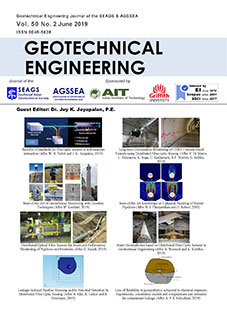Comparative Study of Distributed Sensors for Strain Monitoring of Pipelines
Main Article Content
Abstract
Natural calamities such as landslides, sinkholes, and earthquakes, as well as man-induced events such as vandalism and terrorist acts, can cause significant deformation and damage to pipelines with potentially devastating humanitarian, social, economic, and ecologic consequences. Therefore, a real-time assessment of the condition of pipelines during and after such events is crucial. Distributed fibre optic technologies are ideal candidates for monitoring pipelines, due to their large spatial range, and relatively small spatial resolution. Nevertheless, practical manufacturing and implementation of distributed strain sensors, as well as their response to various actions is not yet fully understood. The aim of this paper is to compare performances of different distributed fibre optic strain sensors in terms of strain transfer quality, costs, and implementation approaches. Comparison is made qualitatively, based on experience, and quantitatively, through large-scale testing, by simultaneously exposing different sensors bonded on the pipeline wall and embedded in the soil in its proximity, to various levels of artificially induced permanent ground movement.
Article Details

This work is licensed under a Creative Commons Attribution-NonCommercial-NoDerivatives 4.0 International License.
Copyright © 2019 Association of Geotechnical Societies in Southeast Asia (AGSSEA) - Southeast Asian Geotechnical Society (SEAGS).


